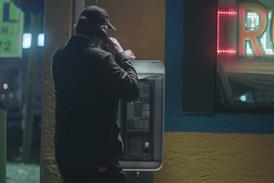In a market flooded with competing cameras, and with 4K gradually gaining ground, knowing when and what to invest in is the biggest challenge for hire firms

The panel

Geert Paul Slee
Owner, Broadcast Rental, Netherlands

Barry Bassett
Managing director, VMI, UK

Danny Dawson
Managing director, Alias Hire, UK

Dan Mulligan
Owner, Pure Digital Services, UK
What are the main challenges facing the hire sector in 2015?
Barry Bassett The headline threat is from new low-cost technology doing the same job as conventional kit. In that respect, it’s nothing new, but we’re also facing problems due to a plethora of new camera models on the market. After a period of some stability, manufacturers are flooding the market with models, making incremental changes if they don’t set the market on fire, and then releasing a new version that often competes with the previous one. The water is now really muddied.
Danny Dawson Buying in the right equipment is one of the main challenges; there are just too many cameras on the market and a good portion of them are too similar. Do hire companies buy everything and hope that it pays off? Can anyone really afford that? And even if they could, does anyone have the space? Personally, I think it’s really exciting when a new ‘must have’ is launched but the question will remain: what do I do with my Sony F3, F5, PMW-200 or Canon C300s?
The other issue, albeit to a lesser extent, is accessories. They are one of our biggest bug-bears – as they are for most hire companies – because new, modern modular camera systems all require a whole range of accessories. I’d rather be buying a new camera than three or four different types of aluminium bar.
Dan Mulligan Consolidating workflow and return on investment on equipment as it is moving so fast. We are witnessing a drive to so many different flavours of camera, but we have also seen production zero in on a certain camera as it is perceived as the best/most used, leaving perhaps better models behind. Guessing what a client wants is getting much harder.
Geert Paul Slee 2015 will probably not be as demanding as last year, partly because there are less industry events. But there are other factors that we have to consider too, especially when working internationally, and you can’t always plan these in a spreadsheet. For example, the current exchange rates – especially the weakness of the euro and the strength of the US dollar – make the Netherlands quite an interesting proposition for clients both from the UK and the US.
How are client demands changing and where is most demand coming from?
BB More competition is leading to lower rates but, again, that’s nothing new: there is always downward pressure on budgets and people are often led by the latest fads. After a period of simply competing on picture quality, we are now seeing people becoming increasingly interested in differentiating their images by making their pictures look different. So clients are looking at new grip systems, lighting technologies, filtration and lenses. We are even seeing conventional dramas shooting on uncoated lenses, which we’ve never seen before.
DD Each camera has a huge list of must-have accessories, but then cost comes in and compromises have to be made. As far as the actual ‘demand’ is concerned, it comes down to the battle between production managers and directors of photography: operators vs cost.

DM Clients want 4K and UHD as cheaply as possible. Although there is not much equipment to view 4K in the home, this is changing. 4K is the new HD, and is becoming ubiquitous. For us, 4K in small form factor is also becoming popular. We are investing in that area for drone, point-ofview and car shots.
GPS The biggest change we’ve seen over recent years is that the lead time between quote and order is shrinking. The requests are coming in later and later, which can make business planning difficult. Demand is coming from the same areas as always, with sport pre-eminent and entertainment also strong.
Is the rise of cheaper, more capable, kit affecting the core business?
GPS The short answer is ‘yes’. Our outside broadcast clients, in particular, are investing more and more in full-service operation – approaching their clients with a simple package and a single cost. The business in that sense is contracting.
BB Yes, undoubtedly. It’s also creating a lot of confusion. We are seeing a large number of mounts that all use the same lenses – E-Mount, A-Mount, EF, ZF, full frame and so on. For a rental company, that’s really challenging as you have to make sure that everything fits together; alter one thing and you can often suffer unintended consequences further down the line.
DM The expectation on rental is now so low that it is near impossible to see any true return on the investment now needed. Plus, if you factor in the support to handhold the production through a new piece of hardware, which is essentially a computer with many menus, we also need a lot more staff.
DD I’m happy to say ‘no, it isn’t’ – not yet, anyway. There may be a time when production companies go out and buy 30 Sony PMW-F-whatevers or its Canon equivalent, due to cost savings, but the life expectancy of these models is quite low due to the next must-have camera being just around the corner. Plus, most demands are made by directors and DoPs. I’m thankful that ours is a business that is holding steady and in most cases is, dare I say, on the rise.

Is there much genuine demand for 4K?
DD From the client base, no. However, we are all aware that most new camera stock will come with 4K capabilities, so I suspect it’s a case of ‘why not’. Most of our cameras that have the ability to shoot 4K come back to us from the client in HD mode. That might change as we see a greater number of genuine 4K sensors, of course, but for 2015 it’s not greatly desired.
GPS While we are seeing interest, there’s not that much, though it does depend which sector of the market you’re talking about. We are seeing different demands from the two sectors that are expressing most interest: 4K sport productions are looking to use equipment fitted with 2/3” lenses; while 4K entertainment productions are concentrating very much on 4K primes.
BB Interest is certainly growing and more clients are 4K aware, but as there are so many different ways of shooting in the format and no agreement on standards, it is difficult for producers to make informed choices. Also, post challenges still limit the demand for full 4K production to those clients with hefty budgets, and will do for some time yet. In many ways, it’s strikingly similar to the early days of HD.
DM I’d say it is all now about 4K for legacy and future deliverables. Although kit is still thin on the ground for home viewing, masters are being shot in 4K and 6K for 4K and HD delivery.
What specific areas are you looking to invest in as the year unfolds?
DD Drones, IP streamers, teleprompters, gimbals and everything else. If we believe we can generate a demand for it, we’ll be interested in having it. We can’t have the attitude of ‘not for us’. Alias is fully committed to attending the main trade shows, even if it does mean having to travel all the way to Vegas, Amsterdam and the Excel.
BB Anamorphic glass and more 4K cameras such as new the Arri Alexa Mini, Alexa 6K and whatever Canon will bring out to replace the C300. NAB is going to be very busy and very interesting.
DM Small form-factor camera systems, such as the Alexa Mini and IO Industries 4K Flare. WorkORK
GPS Looking at what is happening with the technology and how it is being used in the market, we think we need to build out our RF department more as wireless production is fast becoming the norm. We are also investing to upgrade our fleet of XT3 servers to 10Gb Ethernet as OB is increasingly demanding that level of connectivity.

What new areas of opportunity do you see for hire companies?
BB If you try to do too much outside of your core areas of expertise, you can drop the ball. We like to stay close to technical developments and follow trends carefully, but not stray too far out of our comfort zone, or change the things that make us unique.
There are plenty of opportunities within that. We’ve only recently opened our new regional branch in Bristol and the logistics of maintaining stock and services in two geographic locations is quite enough to be going on with.
DD We are expanding our range of services, and we can only really do that if we expand our range of products. Providing a crew service is, of course, a no-brainer and since launching the option this year, we’ve already surpassed 30 crew days.
As we have a drone and an in-house operator, we will continue in that vein. I really believe that having a wide range of products is the key to taking advantage of new opportunities.
DM Due to the demand now for certain cameras, we have to diversify into on-set data management and location post services. And, yes, even VFX.
GPS We think the use of slo-motion and ultra-slo-motion minicams will really take off this year. Make them wireless-capable and you have a really flexible production tool that sport producers, in particular, are going to want to deploy wherever they can.


























No comments yet